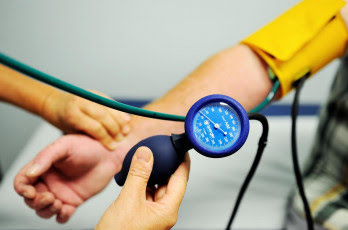SINGAPORE: The Ministry of Health’s recently released 2022 National Population Health Survey has revealed concerning health trends among residents aged 18 to 74. The study has highlighted a doubling of high blood pressure rates since 2010, while obesity rates have also surged in recent years.
Simultaneously, there have been positive developments in the realm of diabetes management and pneumococcal vaccination rates for older citizens.
High Blood Pressure Rates Skyrocket
The most striking revelation from the survey is the alarming increase in high blood pressure among local residents aged 18 to 74. The study found that the rate has surged to a staggering 37%, doubling since 2010. This sharp increase raises concerns about the long-term health implications for the affected population.
Obesity Rates on the Rise
In addition to high blood pressure, the survey reported a significant uptick in obesity rates. Between 2013 and 2022, the percentage of obese residents jumped from 8.6% to 11.6%. This concerning trend underscores the importance of addressing lifestyle choices and eating habits in the local community.
Positive Developments in Diabetes and Hyperlipidemia
While high blood pressure and obesity rates are on the rise, there have been positive developments in the management of diabetes and hyperlipidemia. The survey reveals that the number of patients with diabetes decreased from 9.5% to 8.5% during the same period. Likewise, patients with hyperlipidemia decreased from 39.1% to 31.9%. These improvements in chronic disease management are promising but need to be maintained and expanded upon.
Pneumococcal Vaccination Rates Improve for Older Residents
For older residents aged 64 to 75, there was a significant improvement in pneumococcal vaccination rates. Before the epidemic in 2019, only 10.3% of this demographic had received the vaccination. However, this figure increased substantially to 26.5% last year. This reflects a positive shift in preventive healthcare practices among the elderly population.
Authorities Stress the Importance of Lifestyle Changes
In response to these findings, health authorities in Singapore emphasize the critical need for lifestyle and dietary changes. They recommend measures such as reducing sodium intake when eating out, choosing low-sodium options, and maintaining a balanced diet.
A national nutrition survey conducted by the Health Promotion Board revealed that daily sodium intake in Singapore increased from 3,480 mg before the COVID-19 pandemic to 3,620 mg last year, significantly exceeding the recommended daily limit of less than 2,000 mg. Shockingly, 90% of Singaporeans now consume excessive sodium, posing a severe health risk.
Common high-sodium foods in the market, such as seasoned cooked foods, fried noodles, and chicken rice, have become increasingly salt-laden. For example, a plate of fried noodles now contains more than 3,800 milligrams of sodium, nearly double its 2010 content. On average, sodium content per serving has surged by 20% compared to 2010 levels.
The survey also highlighted lifestyle changes contributing to these health issues. Compared to pre-pandemic times, Singaporeans now consume more high-fat foods, with over 60% exceeding daily calorie limits. This shift is attributed to increased dining out and takeout orders. Furthermore, remote work has led to reduced exercise, with only 75% of residents achieving 150 minutes of exercise per week, down from 85% before the pandemic.
In light of these concerning trends, Singapore’s health authorities are urging citizens to prioritize their health by adopting healthier dietary habits, reducing sodium intake, and increasing physical activity. Addressing these issues is vital to improving the overall health and well-being of the population.

